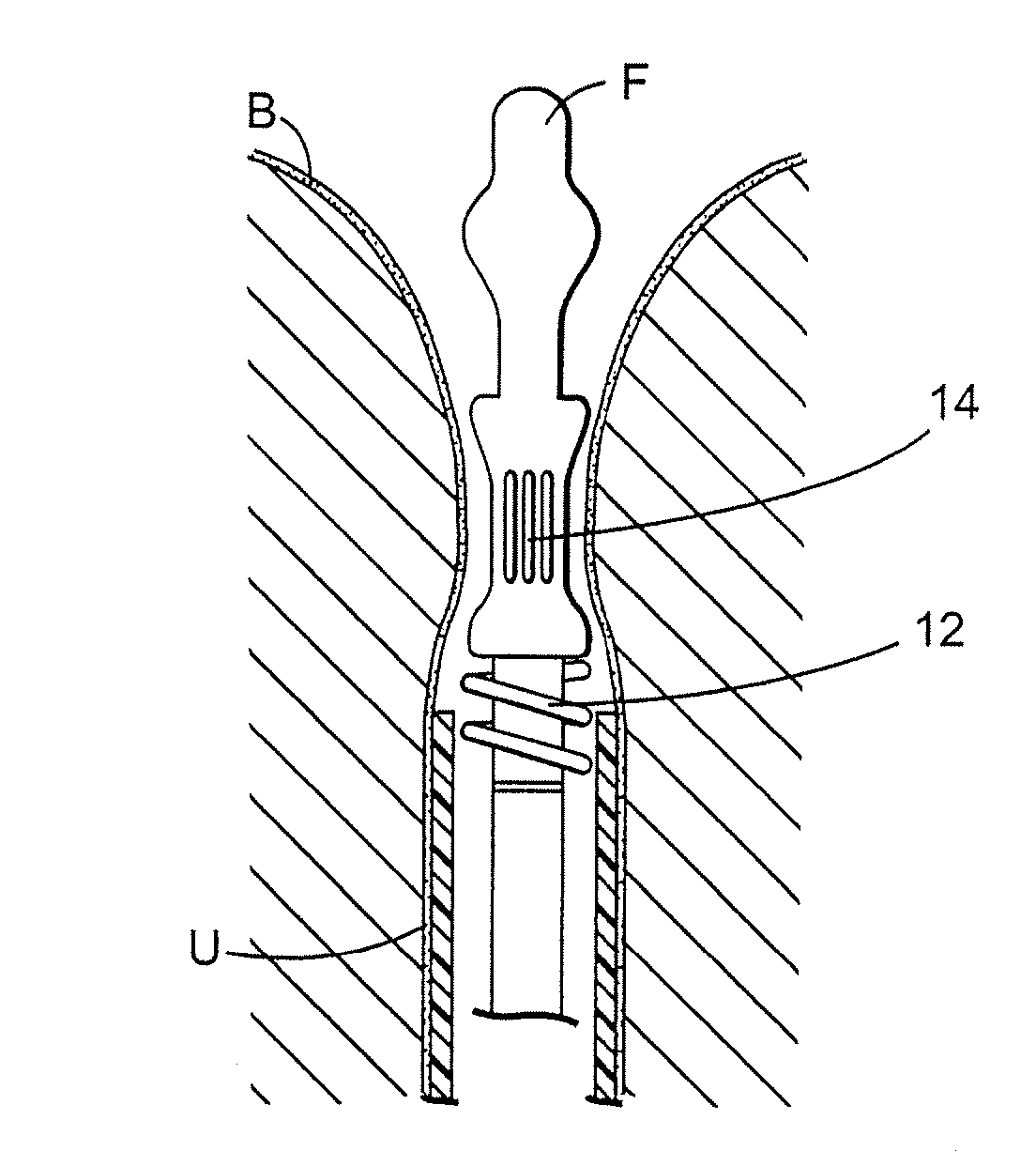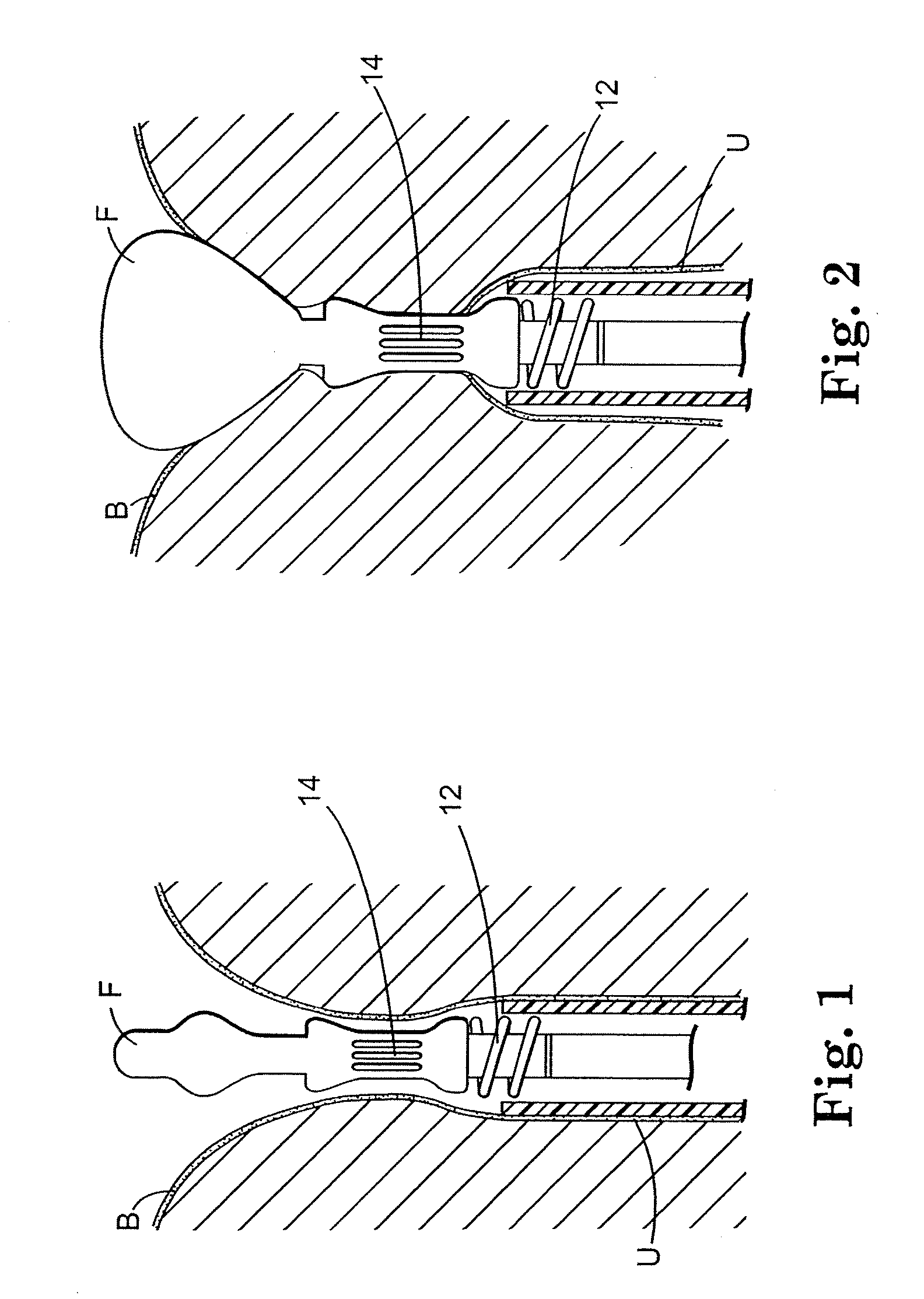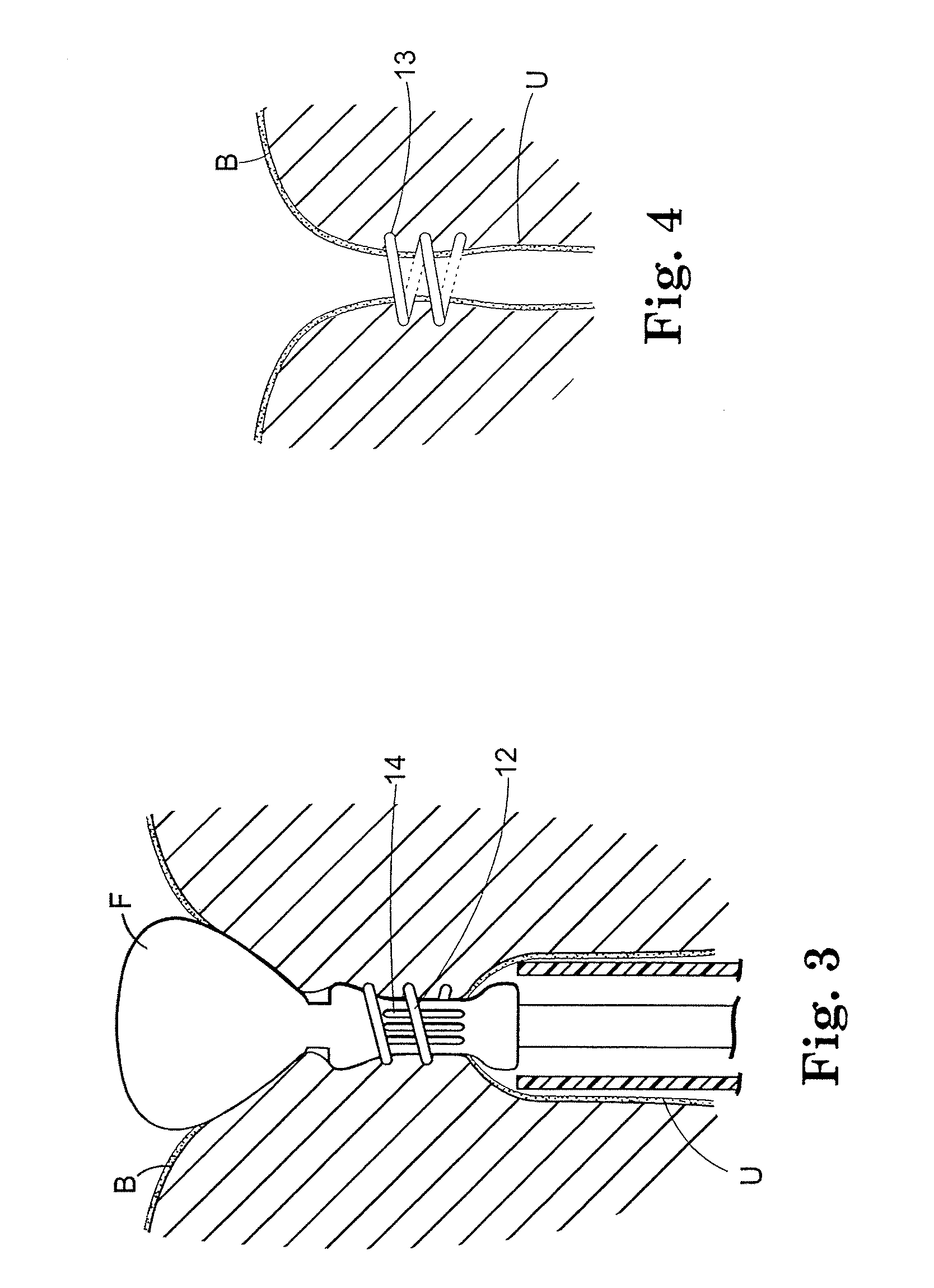Surgical Articles for Placing an Implant about a Tubular Tissue Structure and Methods
a tubular tissue and implant technology, applied in the field of surgical instruments, can solve the problems of urethral obstruction, difficulty in voiding, rare complications of sling procedures,
- Summary
- Abstract
- Description
- Claims
- Application Information
AI Technical Summary
Benefits of technology
Problems solved by technology
Method used
Image
Examples
Embodiment Construction
[0070] The following description is meant to be illustrative only and not limiting. Other embodiments of this invention will be apparent to those of ordinary skill in the art in view of this description.
[0071]FIGS. 1 through 4 are schematic illustrations of a surgical device for placing an implantable article about a tubular tissue structure, such as a patient's urethra U. The bladder neck is situated between the patient's bladder B and urethra U.
[0072] The surgical device includes an inflatable member F, a means for collapsing the tubular tissue structure (in this embodiment a vacuum element 14) about an immobilizer (the tubular structure between the vacuum ports), and an implantable article deployment member 12 movable between a retracted position (FIG. 1) and an extended position (FIG. 3).
[0073]FIG. 1 shows the surgical device after it is inserted transurethrally so that portions are deployed within the bladder B and urethra U.
[0074]FIG. 2 shows the inflatable member F inflat...
PUM
 Login to View More
Login to View More Abstract
Description
Claims
Application Information
 Login to View More
Login to View More - R&D
- Intellectual Property
- Life Sciences
- Materials
- Tech Scout
- Unparalleled Data Quality
- Higher Quality Content
- 60% Fewer Hallucinations
Browse by: Latest US Patents, China's latest patents, Technical Efficacy Thesaurus, Application Domain, Technology Topic, Popular Technical Reports.
© 2025 PatSnap. All rights reserved.Legal|Privacy policy|Modern Slavery Act Transparency Statement|Sitemap|About US| Contact US: help@patsnap.com



